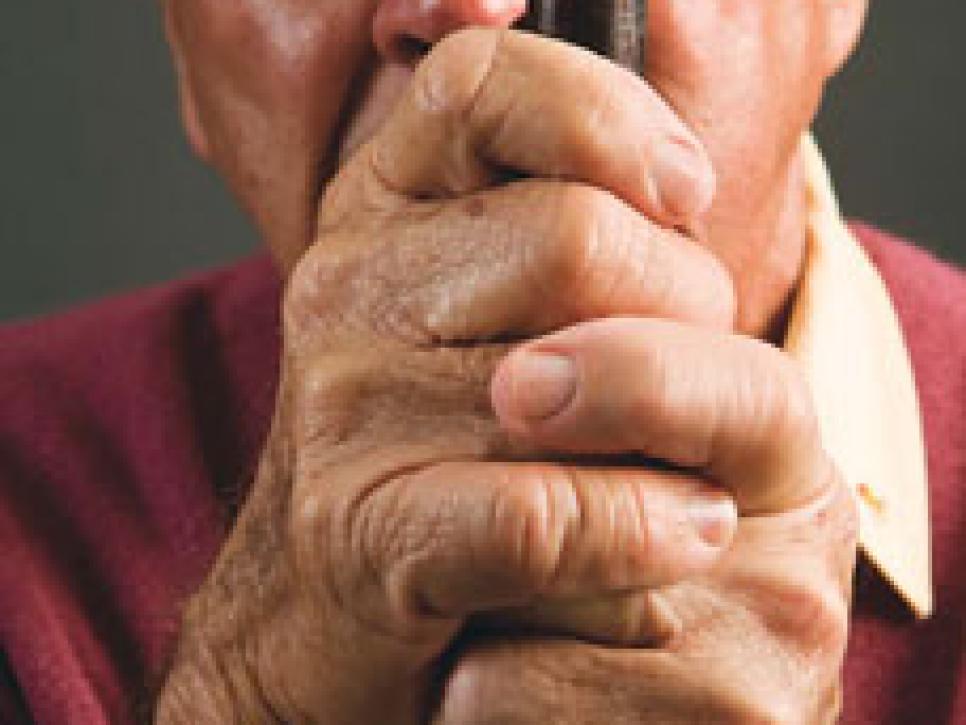The Loop
Fitness Friday: Getting a better handle on it

Golf instructors talk about the grip in terms of how it impacts swinging a club effectively. In regards to pressure, most say you shouldn't squeeze the handle any harder than 50 percent of the hardest you can possibly squeeze it (although I've been told that players such as Tiger Woods and others on tour grip the club harder than that). The thought is that the harder you squeeze, the more you hinder the centrifugal force that makes a golf club speed through the impact zone. You might have heard the golfspeak term "releasing the club." Well, if you squeeze too hard, you won't get that feeling of release as the club moves through the hitting area and a restricted swing will likely produce a crappy shot.
Another interesting take on grip pressure comes from sport psychologist Gio Valiante. Gio, who works with several professional golfers, has noted that, under pressure situations, it's almost guaranteed that your grip pressure will increase significantly unless you're consciously aware of it. He suggests gripping the club as lightly as you can in those moments to help counter the constriction instinct.
While the advice is good, there's an even better reason to pay attention to how you grip the club. You might be hurting yourself. Tendinitis in the forearms and elbows, carpal tunnel syndrome in the hands, fractures of the hook of hamate bones in the wrists, these are all possible injuries that can be avoided if you pay more attention to gripping the club safely. With that in mind, here are some things to consider:
1. Beef up your grips. The wider your grips are, the less compression force you need to hold on to the club when you swing. The "off-the-rack" width is almost always too narrow for men.
__2. Replace your grips the moment you feel like they are getting smooth.__Golf Digest equipment editor Mike Stachura recommends doing this approximately every 40 rounds.
3. Check the length of your clubs. Clubs that are too short or are gripped at the very tip place you at risk of fracturing the hook of hamate bone in the wrist of your dominant arm.
__4. Check your grip position.__This might run counter to what a golf instructor recommended, but you want the thumb of your non-dominant hand to rest on top of the golf shaft as much as possible. The more it rests on the side, or underneath, the more stress it puts on the ligaments, muscles and tendons.
5. Relax. Right before you take the club back, relax all the tension in your hands and forearms. Don't worry, as soon as you start to swing, you'll subconsciously squeeze the handle harder. This tip just helps prevent you from squeezing too hard. A good rule of thumb is to squeeze the club only as hard as you need to swing it properly.
Ron Kaspriske is the fitness editor for Golf Digest.*
(Photo By Walter Iooss Jr.)

